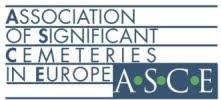The 200 years old Piratello Cemetery is one of the seven cemeteries in the city of Imola.
About the cemetery
The Piratello Cemetery was built 3,5km away from the city centre. Back then, that location was chosen to avoid any epidemiological contagion. A plaque located on the arch connecting the Garden-Cloister with the North-West cemetery reminds us that on 29th October 1821 the land designated to become the Cemetery of the City of Imola was blessed. The cemetery then started to be in use on 1st February 1822. Today it reflects the history of the city through its most illustrious people and bears witness to the architectural evolution of the last 200 years.
At the beginning of 1978, a project was drawn up, aiming to enlarge the cemetery eastwards. The first graves were placed in the new part in 1985. The various segments continued to be added with no interruptions within the framework of a single project that was accomplished in 1995. The latest ones can be found south of these structures and were formed between 1999 and 2002. This architectural portion was granted acknowledgement awards and was described in several specialized publications. Several arcades can be found all over the cemetery. The green grassy expanses, the geometrically-cut edges of laurel and the magnificent cedars and cypresses create extremely rich, harmonious and valuable green spaces.
Main parts of the cemetery
The Garden-Cloister is the main and oldest core of the cemetery. This former cloister of the Franciscan monastery is a very evocative place. Under its arcades lie graves of Imola’s noble families with outstanding works of art. The simple inner garden features centuries-old trees.
The Gran Campo (Great Camp) dates back to the seventies of the 19th century and is surrounded by a tall arcade with dome-shaped pavilions. The eastern dead-end pavilion represents the Famedio where popular, well-deserving and donor citizens were buried, as well as the mayors of the town. Here are the graves of very well-known people, such as Giuseppina Cattani and Andrea Costa, whose epigraph engraved on the tombstone that contains his ashes was written by Giovanni Pascoli.
The Monumental Camp, built in 1916, houses the families’ funerary chapels. Access to this area is provided by a wide staircase, on top of which there is the Shrine of the Fallen during the 1st World War. The sculpture of the Victory over the funerary crypt was made by the artist Cleto Tomba. The crypt dedicated to the fallen partisans who joined the Resistance movement during the 2nd World War is located in the southern end of the Monumental Camp, inside a building with arcades and polychrome windows, started before the 2nd World War and finished in 1955.
Starting from 1944 the occupying German troops arranged the graves of the fallen German soldiers. They stayed here until the winter of 1961/62 when the tombs were moved to the war cemetery at the Futa Pass.
Opening hours
Winter time: from 7:00 to 18:30Summer time: from 7:00 to 19:30
Basic data
Number of graves: 35.411Cemetery size: 127.887m2
Cemetery type: Municipal and civil






